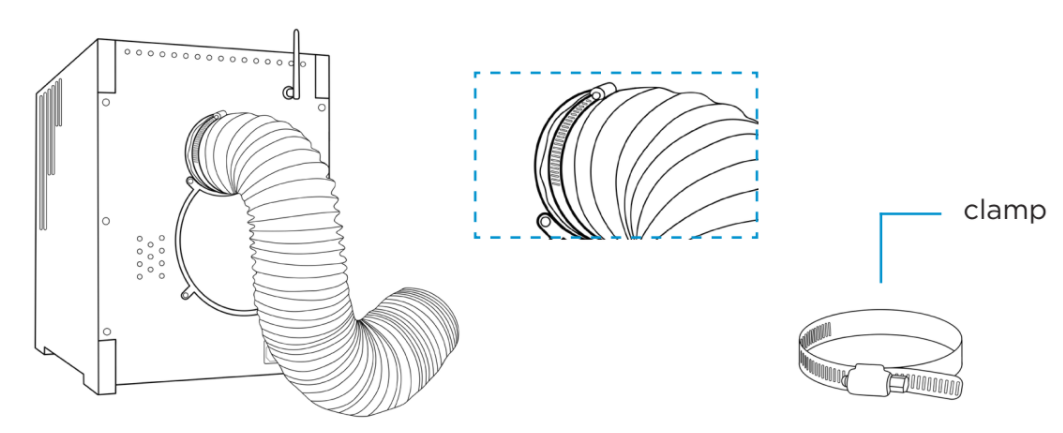Ventilation
Ventilation should always be attached before using the roaster. Ensuring proper ventilation is important for better functionality and to create a healthy and safe working environment.
Sections:
Ventilation options
It is recommended to use a flameproof metal hose with a diameter of 80 millimeters and no more than 3 meters long to ensure proper ventilation. The ventilation hose is easily attached to the back of the roaster - that’s all it takes to “install” the ventilation system for your ROEST.
A standard 80 millimeters hose of 1.5 meters in length is included in the package.
We also provide other ventilation options for your ROEST sample roaster:
3 meters ventilation hose
If you need extra length to direct the fumes outside of an opened window or for attaching to your internal ventilation system.
90 degree elbow
For directing the fumes to the sides towards the window or away from the walls.
How to use the HOSE
Stretch and cover the ventilation exit with the hose, and tighten with the clamp included with the roaster. Direct fumes outside through an open window or to an internal ventilation system.
How to use the ELBOW
The elbow is easily inserted into the ventilation exit and does not need a clamp. Direct the airflow away from the walls and towards a window - works both sideways and upwards.
Safety precautions and ventilation requirements
If hot air from the ventilation exit hits the wall (if the wall is too close), the roaster is not adequately ventilated, and there is a risk of overheating. In this case, the heating element will shut down as a safety measurement to avoid a fire within the roaster.
Ensure that the fan gitter on the back for the cooling fan is not blocked by any means, as well as the ventilation/cooling holes on the side and the back.
The roaster must stand on its four legs with free air passing under the roaster.
The roaster has powerful fans accessible for cleaning at the back. The impellers (fan blades) can create injury to hands/fingers. Never place your hands or fingers inside the ventilation exit hole.
If a coffee bean or something similar gets sucked into the ventilation, it will be ejected (shot out) at high speed from the ventilation exit hole. Therefore:
Never look inside the ventilation exit hole when the roaster is ON.
Never place the roaster with the ventilation exit hole facing people or animals.
We recommend always using a ventilation hose to direct the airflow towards an open area, ideally outdoors.
The roaster has multiple areas that get very hot. Therefore:
For safe operations, only use the handles, touch screen, and rotary encoder knob to operate the machine. Touching the hot surfaces may cause injury.
The hottest places on the roaster are shown in the images below.
Hot parts viewed from the front - drum, hopper, trier, and holes on both sides of the side panels.
Be aware of the ventilation exit in the back.
Be aware that other parts might get hot. Show caution.
















